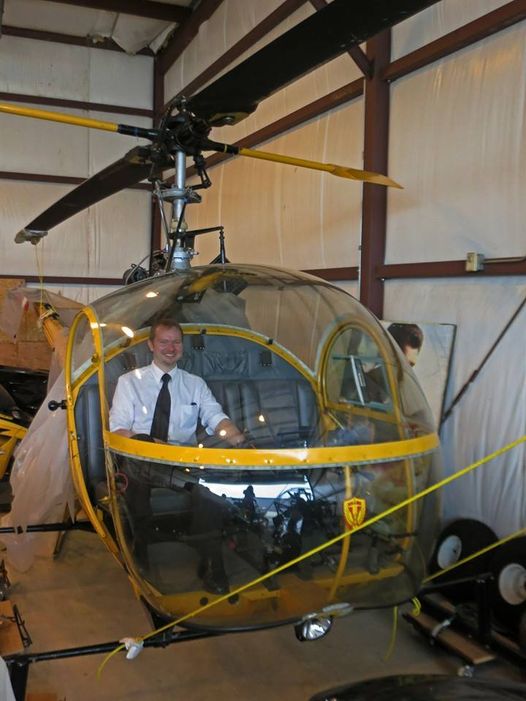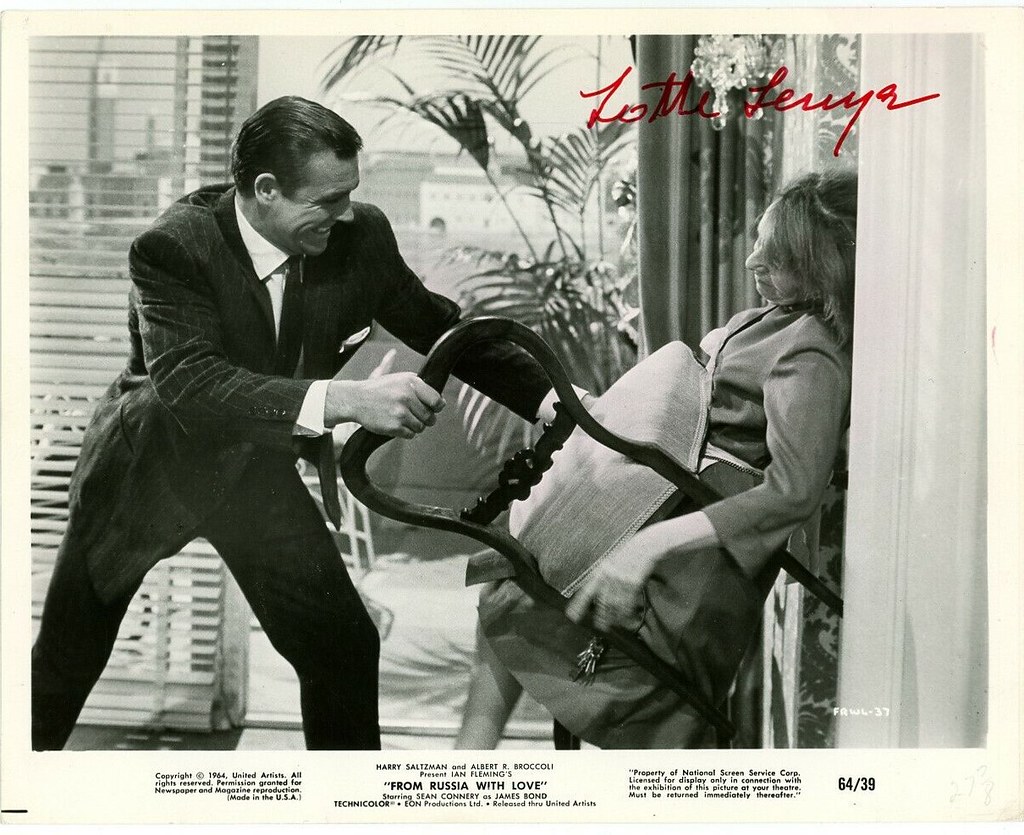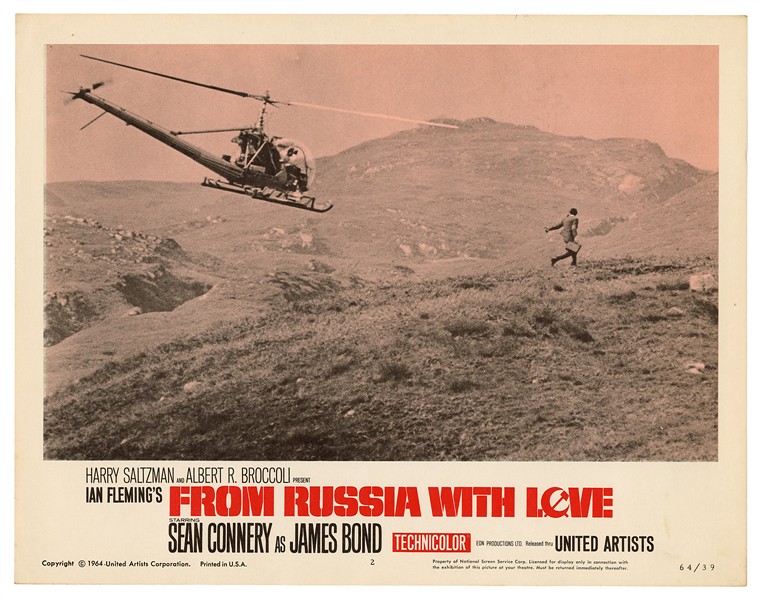WHAT: From Russia With Love (1963) 60th Anniversary Event
WHEN: May 17, 2023 1 PM & 7:30 PM
WHERE: Pickwick Theatre, Park Ridge, IL
WHAT ELSE: James Bond author/historian Raymond Benson returns to introduce FRWL at 7:30 PM; FRWL movie memorabilia on display.
HOW MUCH: $12/$10 advance or $10 for the 1 PM matinee
Advance Tickets: Click Here!
“Tell me. What lunatic asylum did they get you out of?” ~ James Bond (Sean Connery) to ‘Red’ Grant (Robert Shaw)
The Pickwick Theatre Classic Film Series is back… and so is James Bond! From Russia With Love (1963), the second film in the Bond franchise, is considered by many to be the best in the series. The majority of fans list it in the “Top 3” alongside Goldfinger (1964) and On Her Majesty’s Secret Service (1969). To honor its 60th anniversary, the Pickwick Theatre Classic Film Series will be screening From Russia With Love on May 17, 2023. James Bond author and historian Raymond Benson will return once again to introduce the film at 7:30 PM. With this screening, we will have presented all the great Bond films from the 1960s during the course of our nine seasons.
After having been inspired by a visit to Istanbul in 1955, James Bond creator Ian Fleming wrote From Russia, With Love in 1956. The novel was published the following year. However, it was when President John F. Kennedy listed the book as a personal favorite (in a 1961 Life article) that sales skyrocketed. Its presidential recommendation aside, the novel stands out as one of Fleming’s best works– a suspenseful spy thriller set during the height of the Cold War. With this in mind, the James Bond film producers had no question as to which story would follow Dr. No (1962).
Even before Dr. No had become a hit at the box office, producers Cubby Broccoli and Harry Saltzman were already at work adapting From Russia, With Love. Joanna Harwood completed a story treatment in August 1962 that was faithful to the Fleming novel, but she left the project early in its development. Some of her suggestions would eventually carry over into the final script. Author Len Deighton (The Ipcress File) was tasked to do his own draft while Richard Maibaum was hired to do another. Deighton would be dropped due to a lack of progress. Maibaum, on the other hand, excelled at translating novels to screen and making them work cinematically. (It would be Maibaum, along with Harwood, who would receive screen credit.) Since United Artists was uncomfortable with the idea of having the Russians– and their intelligence organization SMERSH– as the primary villains in the movie (as they were in the novel), the decision was made to sidestep the political issue altogether by changing the antagonists to the rogue criminal group SPECTRE.
To avenge the death of Dr. No, SPECTRE plans to use British agent James Bond as a pawn in a plot to take a Lektor decoding machine from the Russians. British Intelligence’s MI6 gets information that a clerk at the Russian consulate, Tatiana Romanova, wants to defect with the Lektor. Suspecting a possible trap, M sends Bond to Istanbul to make contact with Tatiana. However, at each step, Bond is shadowed by SPECTRE agent Red Grant; the assassin plans to keep Bond alive long enough to steal the Lektor– and embarrass British Intelligence in the process.
Harry Saltzman was the driving force behind the screenplay. His creative ideas could be good as well as very bad, but some of the better ones made it into the final film. It was Saltzman who suggested the sequence in which “James Bond” is killed. (Director Terence Young, however, changed its location to the garden on SPECTRE island.) Saltzman had also suggested the training school for SPECTRE agents, which was directly inspired by the gladiators in Spartacus (1960).
After a career-defining debut in Dr. No, Sean Connery returned as 007. At this point, he had proven to be a leading man with real presence. Once again, he had a stellar cast around him. Cast in the role of Tatiana was twenty-one-year-old Daniela Bianchi, the 1960 Miss Universe runner-up. The producers had been looking for a “young Greta Garbo” type. Daniela was one of several finalists for the role, but it was Sean Connery who made the final choice. On the recommendation of director John Ford, the filmmakers cast Mexican star Pedro Armendariz as Ali Kerim Bey, head of MI6 Station T in Istanbul. Sadly, halfway through shooting, Armendariz discovered he was dying from inoperable cancer. He insisted on completing the film, so the shooting of his scenes took precedence.
Cabaret singer and stage actress Lotte Lenya was cast as Rosa Klebb, the former SMERSH agent turned SPECTRE operative. Robert Shaw, a part-time novelist, played the assassin, Donald “Red” Grant. Also in the cast were Bernard Lee as M; Eunice Gayson (reprising her role as Bond’s girlfriend from the first film); Aliza Gur and Martine Beswick as the fighting Gypsy girls; Vladek Sheybal as Kronsteen (the SPECTRE “planner”); and Desmond Llewelyn making his first appearance in the series as Major Boothroyd– or “Q,” as he would later be known.
From Russia With Love, which began production on April 1, 1963, benefited from having a budget twice as large ($2 million) as that of Dr. No. It was Terence Young’s second Bond film as director, and it was he who was largely responsible for defining James Bond on screen. Young brought the same sense of style and intrigue that he had given to Dr. No. On the set, meanwhile, he created an atmosphere of joy and enthusiasm for his actors. With this sequel, Young made the film more of a suspenseful thriller in the vein of other ’60s Cold War movies (even though the adversary was not the Russians per se).
The film was beautifully shot by Ted Moore, who captured the atmosphere and exoticism of Istanbul, Turkey. Locations involving the Hagia Sophia and the Basilica Cistern are particularly evocative. In the novel, once Bond was given the Lektor, he and Tatiana immediately boarded the Orient Express, but in the film, scenes between the two actors were expanded to allow for more locations. One example is the ship scene along the Bosporous strait in which Bond tells Tatiana to speak into the microphone. Gorgeous locations have always been part of the Bond formula, but From Russia With Love makes use of some of the most scenic.
Daniela Bianchi and Sean Connery

From Russia With Love, being one of the most suspenseful Bond films in the series, contains echoes of “The Master of Suspense” himself, Alfred Hitchcock. The plot is centered around the Lektor decoding machine, which is similar to the Enigma machine used in World War II. In this scenario, it’s something that has vague military value. No one is questioning why it’s needed; it just needs to be stolen from the other side. It’s simply a plot device to move the story forward– like Hitchcock’s “MacGuffin.”
A certain degree of Hitchcockian suspense permeates the film, particularly in the scenes onboard the train. The famed Orient Express has become synonymous with mystery and intrigue in movies. In From Russia With Love, it’s the setting for one of the most pivotal scenes between hero and villain. Bond’s final confrontation with Red Grant is five minutes of sustained suspense built upon the character interaction and the audience’s knowledge of the attache case. By placing the two characters in close proximity in such a confined space, Young was able to build up the tension. This is also a wonderful moment in which Bond uses his brain– as well as his fists– to get out of his predicament.
Terence Young was more than capable of staging such a dynamic scene. He had always kept himself in good shape. In his younger days at Cambridge, he had been a boxer and rugby player. This physicality helped him set up one of the best-remembered sequences in any James Bond film. Sean Connery’s fight with Red Grant onboard the Orient Express is regarded as one of the great movie fight scenes. Young had worked out the choreography in detail with the stuntmen– using two doubles while the actors stood by, anxious to do it themselves. Young told Connery and Shaw multiple times that they’d get hurt and that they wouldn’t do it as well, but this was a calculated ploy on his part to get them to do it the way he wanted.
With the exception of one shot that used doubles, Sean Connery and Robert Shaw did the sequence themselves over the course of three days. It was filmed using three cameras. Staged in the tight space of the train compartment, the fight seems even more violent. Adding to the effect is the use of ambient sound, which is accomplished after the window is shot out. The noise of the wheels on the track seems to get louder as the fight progresses. The sound enhances the brutality on the screen.
A Japanese poster for From Russia With Love.

Alfred Hitchcock’s most famous sequence in North By Northwest (1959)– the crop duster that pursues Cary Grant– is re-imagined with a helicopter in From Russia With Love. Terence Young had originally planned to stage his helicopter sequence in Istanbul, but it was later shot in Scotland. The filmmakers were on record as having cited the Hitchcock scene as a direct inspiration. However, editor Peter Hunt, in the audio commentary for From Russia With Love, has pointed out the key difference between both sequences. Hitchcock was a filmmaker who storyboarded everything so that the editing choices (if any) were limited. What was put together was exactly what Hitchcock wanted. By contrast, with Terence Young, there was a larger number of shots filmed; as a result, there was more creativity on the part of the editor.
Sorting through all the different takes was hard work for Peter Hunt, but he enjoyed working immensely with Terence Young. Hunt is another one of those names deeply associated with the James Bond franchise. (He would later direct one of the best films in the series, On Her Majesty’s Secret Service.) Throughout the making of From Russia With Love, Hunt found unconventional solutions to problems and ways to rearrange scenes for better clarity. He said he often had to “fight with it,” but the results always enhanced Young’s direction.
It was while scouting locations in Scotland for the boat climax that near-tragedy struck. Terence Young, along with art director Michael White and a cameraman, were in a helicopter that crashed into 30 feet of water. If they hadn’t shattered the plexiglass bubble of the helicopter, the men would have drowned. Fortunately, each was able to get out with minimal injuries and continue. The only delay was in getting another helicopter.
The climax, set in the Gulf of Venice, involved a boat chase in which Bond and Tatiana are pursued by SPECTRE agents. As with the helicopter sequence, this was originally scheduled earlier in the shoot. However, due to technical issues– the boats they had at the time were moving too slowly– the sequence was moved back. Bond’s escape via a flare pistol and the fiery explosion upon the fuel-covered surface of the water had some slight similarities with The Red Beret (1953), which had Alan Ladd escaping a minefield by setting off a series of explosions. The shoot, however, did not go quite as planned. Everything was set for one take, but the explosions on the water mistakenly went off during rehearsal, forcing the crew to re-shoot everything by the next day.
A huge contributing factor to the success of the series overall, and to this film specifically, is the music of John Barry. Although he discovered firsthand that instrumentation of actual Turkish songs wasn’t going to work in a Bond film, Barry was nevertheless able to give the score an exotic quality with his classical, Western orchestra. Some of his most evocative music is set in the mosque scene (where Bond meets Tatiana). Barry had arranged the James Bond theme on Dr. No, but in the follow-up he introduced the “007 Theme” for the first time, which is a lighter, more adventurous piece. It would be heard in the Bond films up through 1979’s Moonraker. In addition to Barry’s score, From Russia With Love features the memorable title song composed by Lionel Bart and performed by Matt Monro. It’s Barry’s instrumental version of it that plays over the opening credits.
The main shooting was completed on August 2 with post-production wrapping September 2– 40 days over schedule and over-budget. The film premiered in London on October 10, 1963, and became a worldwide smash. The reaction was overwhelmingly enthusiastic. The critical reception was generally positive, although From Russia With Love‘s reputation as a classic has only increased over the decades. Most recently, in 2022, the film was included in the BFI Film Classics series, which profiles the great films of cinema. It is the only James Bond film to be listed in the series.
As a film, it was unlikely to disappoint with so many extremely talented people working on it. It was with this film that all the Bondian elements came together. From Russia With Love presented audiences with many key components that would become part of the Bond franchise going forward: the first pre-title action sequence; a title sequence using the dancing female form (upon which designer Robert Brownjohn projected the credits); the introductions of Blofeld and “Q”; and the post-climax action scene (Bond confronting Rosa Klebb in the Venice hotel room).
From Russia With Love succeeded in creating a world of espionage. The story was so good it didn’t require the fantastic, Ken Adam sets seen in the other Bond films– although it does feature a memorable set involving a chess match. (Ken Adam wasn’t available on this film, so Syd Cain took over as production designer.) From Russia With Love was more serious and grounded in the genre of gritty, espionage thrillers. The Bond films would in time expand in scope and make Bond a larger-than-life character. The films, as a result, would eventually become comic book-like. The franchise wouldn’t regain its harder edge again until the late 1980s with the Timothy Dalton Bond films and then again in the 2000’s with Daniel Craig.
Fans who grew up watching these films on network television will appreciate experiencing them on the big screen. In addition to having Raymond Benson provide the introduction, we will have some of my own From Russia With Love memorabilia on display in the theatre lobby at 6:30 PM when the doors open. As a bit of film program trivia, From Russia With Love was one of the finalists for our very first show in 2013, to celebrate its 50th anniversary. (Instead, we opted for a more family-oriented film.) Ten years later, we are thrilled (and relieved) to finally be showing it for its 60th anniversary.
~MCH
Here I am in the actual Hiller UH-12 Helicopter that was used in the chase scene in From Russia With Love. (Courtesy of the Ian Fleming Foundation.)








One thought
Comments are closed.